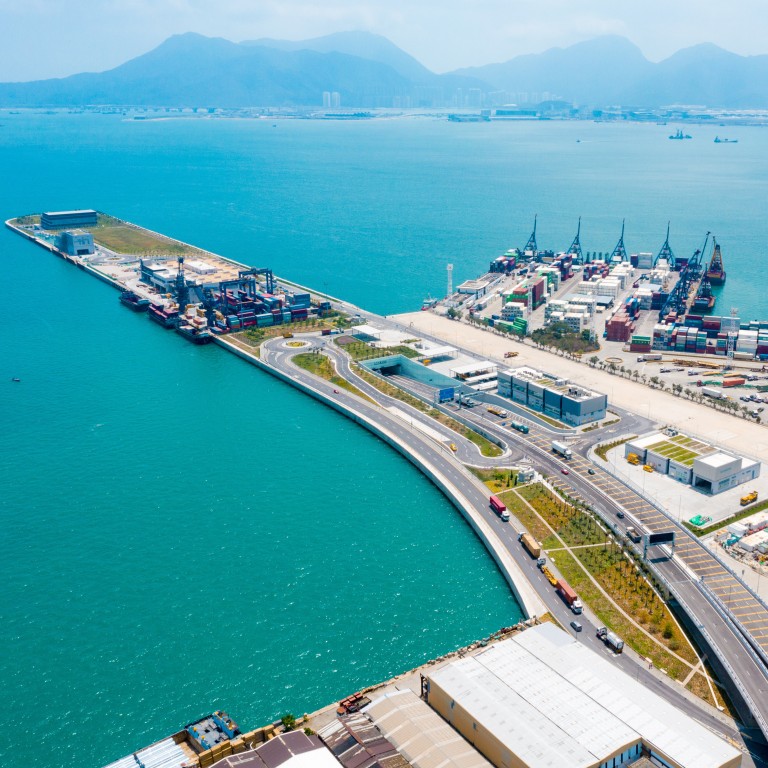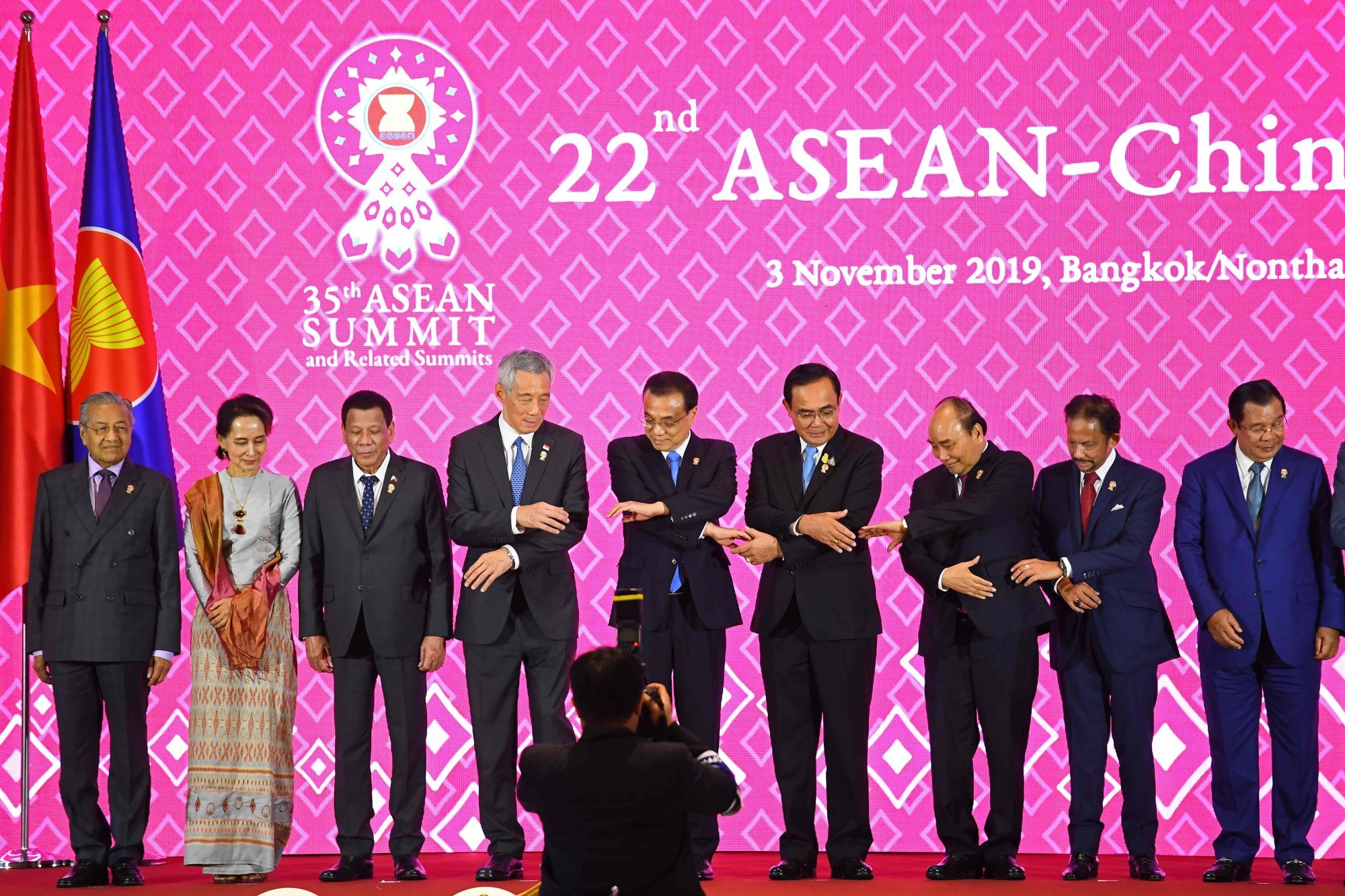
Singapore looks to rival Hong Kong by leveraging a legacy of ties with China’s Greater Bay Area
- A long history of cooperation with the region leaves the city-state well placed to challenge Hong Kong as a partner in future growth
- Eleven major cities within or adjacent to Guangdong province are pushing into hi-tech manufacturing and towards industries which will shape the 21st century
Plans for the future economic development of the Greater Bay Area (GBA) should give Hong Kong an inbuilt advantage, allowing the city to capitalise on its strengths as an international financial hub and a regional centre for logistics, multinationals and first-class professional services.
Nothing, though, can be taken for granted. As 11 major cities within or adjacent to Guangdong province accelerate their push into hi-tech manufacturing and towards the new industries which will shape the 21st century, the competition is sure to intensify.
In particular, Singapore, with so much to offer and so much to gain, is not just going to sit back and watch things happen. Hong Kong’s regional neighbour and traditional rival has been moving fast to cement contacts with partners and prospective clients in the GBA, line up projects and seal deals.
And, in doing that, the sales pitch typically highlights a few favourite themes: Singapore’s long-time links and cultural affinity with southern China, plus its leading role in the Asean trading bloc and the doors that could potentially open.
“Close ties with the GBA region are historical,” says Basil Hwang, vice-chairman of the Singapore Chamber of Commerce (Hong Kong). “And today, Asean is China’s largest trading partner, with Singapore, as a leading trade and financial centre, having a key role to play in that relationship.”

In fact, he notes, even before the GBA concept came together in its current form, the Singapore-Guangdong Collaboration Council, or SGCC, was established back in 2009. Its most recent meeting, in August last year, was a chance to gauge progress and reaffirm its original purpose.
In essence, that is to foster partnership in six principal areas: innovation, intellectual property (IP), talent strategy, financial services, trade and investment, and smart cities. On the fringes of last year’s meeting, 15 significant deals were signed between Singapore-based multinationals and their counterparts in Guangdong. Most of these agreements focused on innovative technologies and “knowledge intensive” projects.
However, looking ahead, the Singapore side confidently expects closer collaboration across an expanding range of industries. This is likely to be led by the export of know-how in logistics, industrial parks, data centres, education, smart cities and other areas where technology, manufacturing and changing lifestyles intersect.
Hwang concedes that, in the past, some companies have encountered unforeseen challenges when trying to break into the Chinese market. The difficulties can stem from the differences in legal systems and business norms, dealing with the authorities or gaining formal approvals.
“Singapore businesses have to be agile and adaptable, and they need to manage risks they may not have faced in their home market,” he says. “They have gotten better at doing so over the years and, as the partnerships grow, there is no doubt that they will become very adept at doing business successfully in the GBA.”
In other respects, Hwang notes, China has had a positive experience in taking on Singaporean management models and adapting them as necessary. Such moves can be traced back to the Deng Xiaoping era of economic reform.
“I believe this will continue, so long as Singapore continues to innovate and produce ideas useful to China’s development,” he says.
Sam Cheong, head of group foreign direct investment advisory and network partnerships for United Overseas Bank, is also optimistic about the general prospects and broad scale of opportunity. To justify this, he points to the GBA’s combined population of around 86 million, a current estimated GDP of US$1.67 trillion, export base and steadily increasing consumer demand.
“As an economic and manufacturing powerhouse that contributes more than a 10th of China’s GDP, the GBA also houses a vibrant tech innovation ecosystem and a highly skilled talent pool,” Cheong says. “This offers opportunities for Singapore companies to connect with Chinese manufacturers, work on product prototypes, and capitalise on existing supply chains to create added value for goods exported to other markets.”
Where necessary, there are various government schemes to lend extra support. For instance, the OneSME platform was launched last September as part of the Singapore-China (Shenzhen) Smart City Initiative. Its main objective is to help the city-state’s SMEs expand their reach by plugging them into a larger network of buyers, sellers and potential business partners in the GBA and across China.
Through the platform, users will also be able to find convenient solutions for digital banking and ways to address their needs for trade financing, collection and payments, and working capital.
Other firms mainly involved in the technology sector – and with ambitions to expand their operations overseas – can tap into the International Co-Innovation Programme run by Enterprise Singapore. This gives them access to funding, expert advice on cross-border collaboration and introductions to help with product development, proofs of concept and the practicalities of regional expansion.
“We can see that the transition to a greener economy is also fast gaining momentum in the GBA,” Cheong says.
“Singapore and China have both set targets to reduce carbon emissions, which presents opportunities for companies to share best practices and collaborate on the development of more sustainable solutions.”
He adds that the challenges posed by climate change are driving significant new demand for green infrastructure, an area where financial institutions can play a role.
Also, by setting out more concessions, the recently updated China-Singapore Free Trade Agreement (CSFTA) should facilitate wider market access and connectivity.
“The agreement’s enhanced investment protection provides greater transparency and legal certainty, which will further boost the confidence of companies looking to participate in GBA initiatives,” Cheong says.
